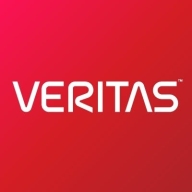

Find out in this report how the two IT Operations Analytics solutions compare in terms of features, pricing, service and support, easy of deployment, and ROI.
| Product | Market Share (%) |
|---|---|
| IBM Turbonomic | 1.1% |
| Veritas NetBackup IT Analytics | 2.7% |
| Other | 96.2% |


| Company Size | Count |
|---|---|
| Small Business | 41 |
| Midsize Enterprise | 57 |
| Large Enterprise | 147 |
| Company Size | Count |
|---|---|
| Small Business | 1 |
| Midsize Enterprise | 3 |
| Large Enterprise | 3 |
IBM Turbonomic offers automation, planning, and right-sizing recommendations to streamline resource management, improve efficiencies, and optimize costs across virtualized environments and cloud platforms.
IBM Turbonomic is valued for its capability to optimize resource allocation and monitor virtual environments efficiently. It facilitates automated decision-making in VM sizing, load balancing, and cost optimization for both on-premises and cloud deployments. Users can leverage insights for workload placement, ensure peak performance assurance, and effectively right-size across VMware and Azure. The ongoing transition to HTML5 aims to improve visual and navigational ease, while expanded reporting features are anticipated. Opportunities for improved training, documentation, and integrations enhance platform usability and functionality.
What Are the Key Features?In finance, IBM Turbonomic aids in maintaining platform efficiency during market fluctuations. Healthcare organizations leverage its capability for resource optimization during high-demand periods to enhance patient care support. Retailers use it for planning in peak seasons, ensuring resources align with fluctuating demand to maintain performance continuity.
Veritas NetBackup IT Analytics offers robust tools for data protection and backup insights for businesses seeking comprehensive analysis. With a focus on delivering reliable metrics, it enhances IT operations through detailed reporting and system integration, ensuring efficient resource utilization.
Veritas NetBackup IT Analytics is designed to provide IT professionals with advanced analytics solutions that streamline data protection strategies. It addresses critical use cases including predictive analysis, capacity planning, and multi-cloud support, enabling organizations to harness the full potential of their backup environments. The platform's detailed dashboards and customizable reports aid in identifying bottlenecks, ensuring optimal performance and compliance with industry standards. By integrating seamlessly with various data sources and storage systems, it offers a holistic overview, facilitating data-driven decision-making.
What are the key features of Veritas NetBackup IT Analytics?In industries such as finance and healthcare, Veritas NetBackup IT Analytics is implemented to address stringent regulatory requirements and manage large volumes of sensitive data. By leveraging its analytics capabilities, these sectors can ensure data integrity, optimize storage solutions, and maintain compliance with industry regulations.
We monitor all IT Operations Analytics reviews to prevent fraudulent reviews and keep review quality high. We do not post reviews by company employees or direct competitors. We validate each review for authenticity via cross-reference with LinkedIn, and personal follow-up with the reviewer when necessary.